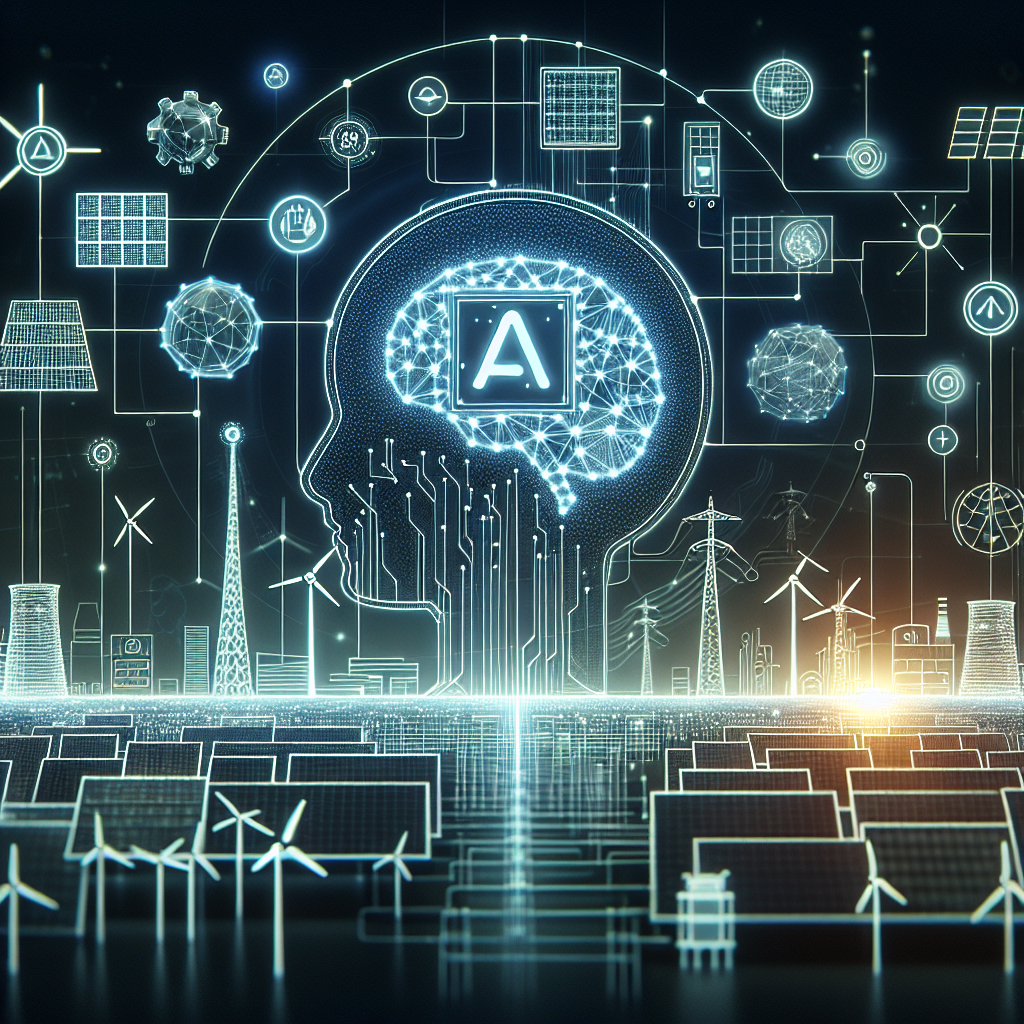AI-Powered Solutions for Enhancing Microgrid Performance in Renewables
In recent years, the adoption of renewable energy sources has been on the rise as the world seeks to reduce its reliance on fossil fuels and combat climate change. Microgrids, which are localized energy systems that can operate independently or in conjunction with the main grid, have emerged as a key technology in this transition. However, managing the complex and dynamic nature of renewable energy sources in microgrids can be challenging. This is where artificial intelligence (AI) comes in.
AI-powered solutions have the potential to revolutionize the way microgrids operate by optimizing energy generation, storage, and distribution in real-time. By harnessing the power of AI, microgrid operators can improve efficiency, reliability, and sustainability, ultimately leading to cost savings and a more resilient energy system. In this article, we will explore the various AI-powered solutions that are being developed to enhance microgrid performance in renewables.
1. Predictive Maintenance
One of the key challenges in managing a microgrid is ensuring the reliability of its components, such as solar panels, wind turbines, and batteries. Predictive maintenance, a technique that uses AI algorithms to predict when equipment is likely to fail, can help microgrid operators proactively address maintenance issues before they escalate into costly downtime.
By analyzing historical data from sensors and other sources, AI-powered predictive maintenance tools can identify patterns and trends that indicate potential issues with equipment. This allows operators to schedule maintenance tasks at optimal times, minimizing disruption to the microgrid’s operation. In addition, predictive maintenance can help extend the lifespan of equipment, reducing the need for costly replacements.
2. Energy Forecasting
Renewable energy sources such as solar and wind are inherently variable, making it challenging to predict how much energy will be generated at any given time. AI-powered energy forecasting tools use machine learning algorithms to analyze historical data and weather patterns to predict future energy production with greater accuracy.
By providing real-time insights into energy generation, AI-powered energy forecasting tools can help microgrid operators optimize their energy storage and distribution strategies. For example, if a solar panel is expected to produce less energy due to cloudy weather, the microgrid can draw on stored energy from batteries or adjust its energy consumption accordingly. This not only ensures a reliable energy supply but also helps maximize the use of renewable energy sources.
3. Demand Response
Demand response is a strategy that involves adjusting energy consumption in response to changes in electricity prices or grid conditions. AI-powered demand response systems can help microgrid operators optimize their energy usage by automatically adjusting consumption based on real-time data.
For example, if electricity prices are high, an AI-powered demand response system can automatically reduce energy consumption by turning off non-essential equipment or shifting energy-intensive tasks to off-peak hours. By optimizing energy usage in this way, microgrid operators can reduce their electricity costs and contribute to a more stable grid.
4. Grid Optimization
AI-powered grid optimization tools can help microgrid operators maximize the efficiency of their energy distribution system by balancing supply and demand in real-time. By analyzing data from sensors, weather forecasts, and energy prices, these tools can optimize the flow of energy within the microgrid to minimize losses and ensure a reliable energy supply.
For example, AI algorithms can determine the most cost-effective way to distribute energy within the microgrid, taking into account factors such as the availability of renewable energy sources, energy storage capacity, and grid constraints. By optimizing energy distribution in this way, microgrid operators can reduce waste, improve reliability, and lower operating costs.
FAQs:
Q: How can AI help improve the reliability of microgrids?
A: AI can help improve the reliability of microgrids by enabling predictive maintenance, energy forecasting, demand response, and grid optimization. By analyzing data in real-time, AI-powered solutions can identify potential issues before they escalate into costly downtime, predict energy production with greater accuracy, adjust energy consumption based on real-time data, and optimize the flow of energy within the microgrid.
Q: Are AI-powered solutions expensive to implement?
A: While the initial cost of implementing AI-powered solutions for microgrids may be high, the long-term benefits can outweigh the investment. By improving efficiency, reliability, and sustainability, AI-powered solutions can lead to cost savings, reduced downtime, and a more resilient energy system.
Q: What are the key considerations when implementing AI-powered solutions for microgrids?
A: When implementing AI-powered solutions for microgrids, it is important to consider factors such as data quality, scalability, cybersecurity, and regulatory compliance. Ensuring that the data used by AI algorithms is accurate and reliable is essential for making informed decisions. Scalability is also important to accommodate the dynamic nature of microgrids and changing energy demands. Additionally, cybersecurity measures should be in place to protect sensitive data and prevent cyber attacks. Finally, compliance with regulations and standards is crucial to ensure that AI-powered solutions meet legal requirements and industry best practices.
In conclusion, AI-powered solutions have the potential to revolutionize the way microgrids operate by optimizing energy generation, storage, and distribution in real-time. By harnessing the power of AI, microgrid operators can improve efficiency, reliability, and sustainability, ultimately leading to cost savings and a more resilient energy system. As the adoption of renewable energy sources continues to grow, AI will play an increasingly important role in enhancing microgrid performance and contributing to a more sustainable future.

